When it comes to Mediterranean cuisine, two types of cheese often take the spotlight: feta and Greek cheese. Both have a rich history and unique flavor profiles that make them staples in many dishes. In this detailed comparison, we will explore the differences, similarities, and best uses of feta and Greek cheese to help you better understand these beloved dairy products. What is Feta Cheese? Feta cheese is a brined cheese that originated in Greece and is traditionally made from sheep’s milk. It has a crumbly texture and a tangy flavor that adds a delicious punch to salads, pastries, and other dishes. Feta is known for its white color and distinct aroma that sets it apart from other cheeses. In recent years, feta cheese has gained popularity worldwide and is now made from a combination of sheep’s and goat’s milk in many countries. The Making of Feta Cheese: The process of making feta cheese is an ancient art that involves precise steps to achieve its unique taste and texture. First, the milk is curdled and then cut into small curds. The curds are drained and then placed in molds to form the characteristic shape of feta cheese. The cheese is then brined for several days to enhance its flavor and preserve it for longer shelf life. The brining process also gives feta its signature salty taste that pairs perfectly with olives, tomatoes, and other Mediterranean ingredients. Nutritional Profile of Feta Cheese: Feta cheese is not only delicious but also packed with nutrients that make it a healthy addition to your diet. It is a good source of calcium, protein, and vitamin B12, which are essential for bone health, muscle growth, and nerve function. However, feta cheese is also high in saturated fat and sodium, so it should be consumed in moderation, especially for those watching their cholesterol levels or blood pressure. Cooking with Feta Cheese: Feta cheese is a versatile ingredient that can be used in a wide range of dishes, both hot and cold. It is commonly crumbled over salads, added to omelets, and baked into pastries to add a creamy and tangy flavor. Feta cheese also pairs well with fruits like watermelon and figs, as well as savory ingredients like roasted vegetables and grilled meats. Its ability to hold its shape at higher temperatures makes feta cheese a favorite for grilling and baking, adding a savory kick to dishes. What is Greek Cheese? Greek cheese is a broad category that includes various types of cheeses made in Greece, each with its own unique taste and texture. Some of the most popular Greek cheeses include Kasseri, Halloumi, and Graviera, each with distinct characteristics that set them apart from feta cheese. Greek cheese is a staple in Mediterranean cuisine and is used in a wide range of dishes, from appetizers to desserts. The Making of Greek Cheese: Like feta cheese, Greek cheese is made from sheep’s, goat’s, or cow’s milk, depending on the type of cheese being produced. The process of making Greek cheese varies depending on the variety, but it often involves curdling the milk, draining the curds, and aging the cheese to develop its flavor. Some Greek cheeses, like Halloumi, are known for their squeaky texture and ability to be grilled or fried without melting, making them a popular choice for savory dishes. Nutritional Profile of Greek Cheese: Greek cheese is a rich source of nutrients, including protein, calcium, and probiotics that support gut health and digestion. Each type of Greek cheese has its own nutritional profile, with some being higher in fat and calories than others. When consumed in moderation, Greek cheese can be a nutritious addition to your diet, providing essential nutrients and flavors that complement a wide range of dishes. Cooking with Greek Cheese: Greek cheese is a versatile ingredient that can be used in both savory and sweet dishes, adding depth of flavor and richness to your recipes. Kasseri cheese, for example, is a semi-hard cheese that melts well and is often used in grilled cheese sandwiches and pasta dishes. Graviera cheese, on the other hand, is a hard cheese with a sweet and nutty flavor that pairs well with honey and fruit in desserts. Halloumi cheese is a unique Greek cheese that can be grilled or fried without melting, making it a popular choice for salads and appetizers.

.
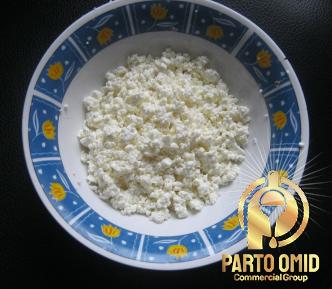 Feta vs. Greek Cheese: The Key Differences While feta and Greek cheese both originate from Greece and are beloved in Mediterranean cuisine, they have distinct differences that set them apart in terms of taste, texture, and culinary uses. Here are some key differences between feta and Greek cheese: 1. Ingredient and Milk Source: Feta cheese is traditionally made from sheep’s milk, though goat’s milk can also be used. On the other hand, Greek cheese encompasses a wide range of cheeses made from sheep’s, goat’s, or cow’s milk, depending on the type of cheese being produced. This difference in milk sources contributes to the unique flavors and textures of feta and Greek cheese. 2. Texture and Taste: Feta cheese has a crumbly texture and a tangy flavor that is slightly salty due to the brining process. It is known for its distinct aroma and creamy mouthfeel that adds depth to salads, pastas, and baked dishes. Greek cheese, on the other hand, comes in various textures and flavors, ranging from soft and mild to hard and sharp, depending on the type of cheese. Each Greek cheese has its own unique taste profile that complements different dishes and cooking methods. 3. Culinary Uses: Feta cheese is a versatile ingredient that can be crumbled, sliced, or melted into a wide range of dishes, from salads to pastries. Its tangy flavor and crumbly texture make it a popular choice for adding depth and richness to savory dishes. Greek cheese, on the other hand, comes in different varieties that are best suited for specific culinary uses. For example, Kasseri cheese melts well and is often used in grilled dishes, while Halloumi cheese is best enjoyed grilled or fried as an appetizer or salad topping. 4. Aging Process: Feta cheese is typically aged for a few months in brine to develop its flavor and preserve it for longer shelf life. The aging process gives feta its tangy taste and crumbly texture that pairs well with a variety of ingredients. Greek cheese, on the other hand, can be aged for different lengths of time, depending on the type of cheese being produced. Some Greek cheeses, like Graviera, are aged for months or even years to develop their complex flavors and textures. Best Uses for Feta and Greek Cheese Feta and Greek cheese are versatile ingredients that can be used in a wide range of dishes, from appetizers to desserts. Here are some best uses for feta and Greek cheese to help you incorporate these delicious cheeses into your cooking: 1. Feta Cheese: – Crumble feta cheese over salads for a tangy and creamy texture.
Feta vs. Greek Cheese: The Key Differences While feta and Greek cheese both originate from Greece and are beloved in Mediterranean cuisine, they have distinct differences that set them apart in terms of taste, texture, and culinary uses. Here are some key differences between feta and Greek cheese: 1. Ingredient and Milk Source: Feta cheese is traditionally made from sheep’s milk, though goat’s milk can also be used. On the other hand, Greek cheese encompasses a wide range of cheeses made from sheep’s, goat’s, or cow’s milk, depending on the type of cheese being produced. This difference in milk sources contributes to the unique flavors and textures of feta and Greek cheese. 2. Texture and Taste: Feta cheese has a crumbly texture and a tangy flavor that is slightly salty due to the brining process. It is known for its distinct aroma and creamy mouthfeel that adds depth to salads, pastas, and baked dishes. Greek cheese, on the other hand, comes in various textures and flavors, ranging from soft and mild to hard and sharp, depending on the type of cheese. Each Greek cheese has its own unique taste profile that complements different dishes and cooking methods. 3. Culinary Uses: Feta cheese is a versatile ingredient that can be crumbled, sliced, or melted into a wide range of dishes, from salads to pastries. Its tangy flavor and crumbly texture make it a popular choice for adding depth and richness to savory dishes. Greek cheese, on the other hand, comes in different varieties that are best suited for specific culinary uses. For example, Kasseri cheese melts well and is often used in grilled dishes, while Halloumi cheese is best enjoyed grilled or fried as an appetizer or salad topping. 4. Aging Process: Feta cheese is typically aged for a few months in brine to develop its flavor and preserve it for longer shelf life. The aging process gives feta its tangy taste and crumbly texture that pairs well with a variety of ingredients. Greek cheese, on the other hand, can be aged for different lengths of time, depending on the type of cheese being produced. Some Greek cheeses, like Graviera, are aged for months or even years to develop their complex flavors and textures. Best Uses for Feta and Greek Cheese Feta and Greek cheese are versatile ingredients that can be used in a wide range of dishes, from appetizers to desserts. Here are some best uses for feta and Greek cheese to help you incorporate these delicious cheeses into your cooking: 1. Feta Cheese: – Crumble feta cheese over salads for a tangy and creamy texture.
..
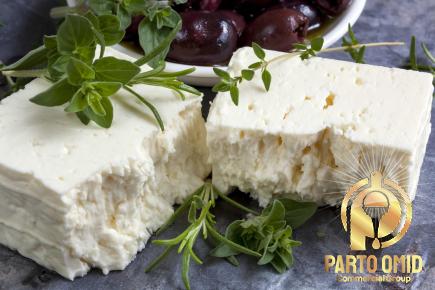 – Add feta cheese to omelets or scrambled eggs for a savory kick. – Bake feta cheese into pastries or bread for a rich and flavorful addition. – Make a feta cheese dip with herbs and olive oil for a delicious appetizer. – Grill feta cheese on skewers with vegetables for a Mediterranean-inspired dish. 2. Greek Cheese: – Use Kasseri cheese in grilled cheese sandwiches or pasta dishes for a melty and savory flavor. – Grill or fry Halloumi cheese for a crispy and satisfying appetizer or salad topping. – Shred Graviera cheese over roasted vegetables or salads for a nutty and sweet addition. – Pair Greek cheese with honey and figs for a simple and elegant dessert. – Melt Greek cheese into soups or stews for added depth of flavor and creaminess. Conclusion: In conclusion, feta cheese and Greek cheese are both beloved ingredients in Mediterranean cuisine that offer distinct flavors, textures, and culinary uses. While feta cheese is known for its tangy taste and crumbly texture, Greek cheese comes in a variety of types that cater to different dishes and cooking methods. Whether you prefer the creamy richness of feta cheese or the sharpness of Greek cheese, both options provide a delicious and nutritious addition to your meals. Experiment with feta and Greek cheese in your cooking to discover new flavors and elevate your dishes with these versatile ingredients. Additional Considerations: When choosing between feta and Greek cheese for your recipes, consider factors such as flavor profile, texture, and cooking method to ensure that the cheese complements your dish. Feta cheese is best suited for dishes that benefit from its tangy taste and crumbly texture, such as salads, pastas, and baked dishes. On the other hand, Greek cheese varieties like Kasseri, Halloumi, and Graviera offer different flavors and textures that can elevate your dishes in unique ways. It’s worth noting that both feta and Greek cheese can be substituted for each other in some recipes, depending on your taste preferences and availability. While feta cheese is a staple in many Mediterranean dishes, Greek cheese varieties can add a new dimension to your cooking with their distinct flavors and textures. Experiment with different cheeses in your recipes to discover new flavor combinations and create delicious meals that showcase the diversity of Greek cheeses.
– Add feta cheese to omelets or scrambled eggs for a savory kick. – Bake feta cheese into pastries or bread for a rich and flavorful addition. – Make a feta cheese dip with herbs and olive oil for a delicious appetizer. – Grill feta cheese on skewers with vegetables for a Mediterranean-inspired dish. 2. Greek Cheese: – Use Kasseri cheese in grilled cheese sandwiches or pasta dishes for a melty and savory flavor. – Grill or fry Halloumi cheese for a crispy and satisfying appetizer or salad topping. – Shred Graviera cheese over roasted vegetables or salads for a nutty and sweet addition. – Pair Greek cheese with honey and figs for a simple and elegant dessert. – Melt Greek cheese into soups or stews for added depth of flavor and creaminess. Conclusion: In conclusion, feta cheese and Greek cheese are both beloved ingredients in Mediterranean cuisine that offer distinct flavors, textures, and culinary uses. While feta cheese is known for its tangy taste and crumbly texture, Greek cheese comes in a variety of types that cater to different dishes and cooking methods. Whether you prefer the creamy richness of feta cheese or the sharpness of Greek cheese, both options provide a delicious and nutritious addition to your meals. Experiment with feta and Greek cheese in your cooking to discover new flavors and elevate your dishes with these versatile ingredients. Additional Considerations: When choosing between feta and Greek cheese for your recipes, consider factors such as flavor profile, texture, and cooking method to ensure that the cheese complements your dish. Feta cheese is best suited for dishes that benefit from its tangy taste and crumbly texture, such as salads, pastas, and baked dishes. On the other hand, Greek cheese varieties like Kasseri, Halloumi, and Graviera offer different flavors and textures that can elevate your dishes in unique ways. It’s worth noting that both feta and Greek cheese can be substituted for each other in some recipes, depending on your taste preferences and availability. While feta cheese is a staple in many Mediterranean dishes, Greek cheese varieties can add a new dimension to your cooking with their distinct flavors and textures. Experiment with different cheeses in your recipes to discover new flavor combinations and create delicious meals that showcase the diversity of Greek cheeses.
…
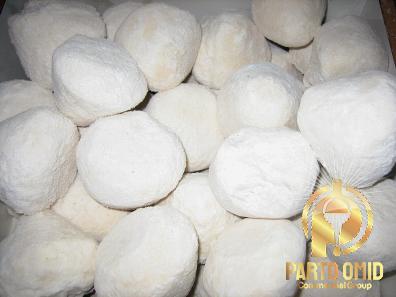 Health Considerations: When incorporating feta and Greek cheese into your diet, it’s important to consider your overall health and dietary requirements. While both cheeses offer nutritional benefits like calcium, protein, and vitamins, they are also high in saturated fat and sodium, which can impact your cholesterol levels and blood pressure. Be mindful of portion sizes and moderation when enjoying feta and Greek cheese to maintain a balanced diet and support your health goals. For those with lactose intolerance or dairy allergies, there are lactose-free and dairy-free alternatives to feta and Greek cheese available in the market. These alternatives offer similar taste and texture profiles to traditional cheeses, making them suitable options for individuals with dietary restrictions or preferences. Be sure to read labels carefully and choose products that align with your dietary needs when selecting feta or Greek cheese alternatives. Incorporating Feta and Greek Cheese in a Balanced Diet: To make the most of feta and Greek cheese in your diet, consider incorporating them into a balanced meal plan that includes a variety of nutrient-dense foods. Use feta cheese as a flavorful topping for salads and soups, or as a protein-rich ingredient in omelets and baked dishes. Greek cheese varieties like Halloumi and Graviera can be enjoyed grilled or fried as savory appetizers or paired with fruits and nuts for a sweet and salty dessert. Pairing feta and Greek cheese with fresh fruits, vegetables, whole grains, and lean proteins can help create well-rounded and satisfying meals that provide essential nutrients and flavors. Experiment with different combinations of ingredients to discover new flavor profiles and culinary creations that highlight the versatility of feta and Greek cheese in your cooking. In summary, feta and Greek cheese are versatile and delicious ingredients that add depth of flavor and richness to a wide range of dishes. Whether you prefer the tangy taste of feta cheese or the sharpness of Greek cheese varieties, there are endless possibilities for incorporating these cheeses into your cooking. Experiment with different recipes, cooking methods, and flavor pairings to discover new ways to enjoy feta and Greek cheese in your meals. With their rich history, distinct flavors, and nutritional benefits, feta and Greek cheese are sure to become staples in your kitchen for creating flavorful and satisfying Mediterranean-inspired dishes.
Health Considerations: When incorporating feta and Greek cheese into your diet, it’s important to consider your overall health and dietary requirements. While both cheeses offer nutritional benefits like calcium, protein, and vitamins, they are also high in saturated fat and sodium, which can impact your cholesterol levels and blood pressure. Be mindful of portion sizes and moderation when enjoying feta and Greek cheese to maintain a balanced diet and support your health goals. For those with lactose intolerance or dairy allergies, there are lactose-free and dairy-free alternatives to feta and Greek cheese available in the market. These alternatives offer similar taste and texture profiles to traditional cheeses, making them suitable options for individuals with dietary restrictions or preferences. Be sure to read labels carefully and choose products that align with your dietary needs when selecting feta or Greek cheese alternatives. Incorporating Feta and Greek Cheese in a Balanced Diet: To make the most of feta and Greek cheese in your diet, consider incorporating them into a balanced meal plan that includes a variety of nutrient-dense foods. Use feta cheese as a flavorful topping for salads and soups, or as a protein-rich ingredient in omelets and baked dishes. Greek cheese varieties like Halloumi and Graviera can be enjoyed grilled or fried as savory appetizers or paired with fruits and nuts for a sweet and salty dessert. Pairing feta and Greek cheese with fresh fruits, vegetables, whole grains, and lean proteins can help create well-rounded and satisfying meals that provide essential nutrients and flavors. Experiment with different combinations of ingredients to discover new flavor profiles and culinary creations that highlight the versatility of feta and Greek cheese in your cooking. In summary, feta and Greek cheese are versatile and delicious ingredients that add depth of flavor and richness to a wide range of dishes. Whether you prefer the tangy taste of feta cheese or the sharpness of Greek cheese varieties, there are endless possibilities for incorporating these cheeses into your cooking. Experiment with different recipes, cooking methods, and flavor pairings to discover new ways to enjoy feta and Greek cheese in your meals. With their rich history, distinct flavors, and nutritional benefits, feta and Greek cheese are sure to become staples in your kitchen for creating flavorful and satisfying Mediterranean-inspired dishes.
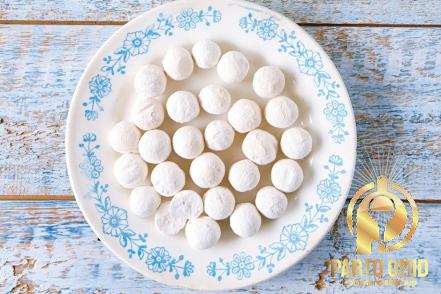
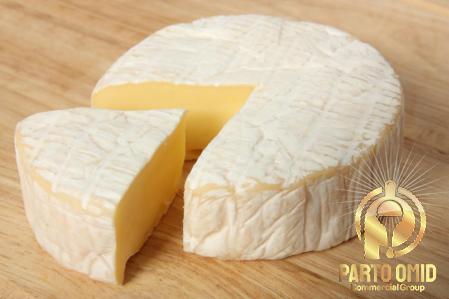
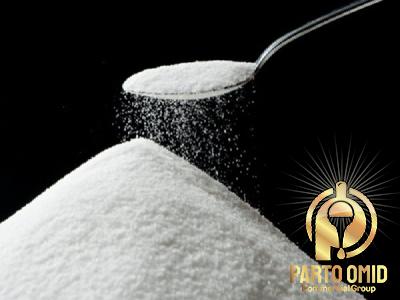
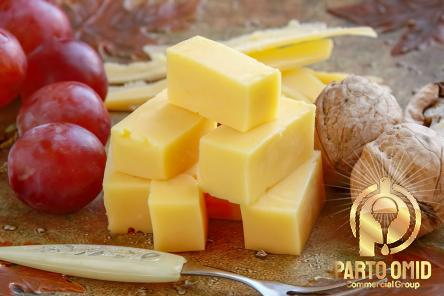
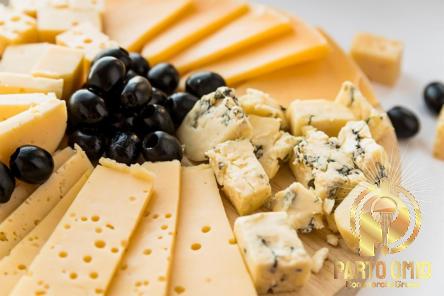
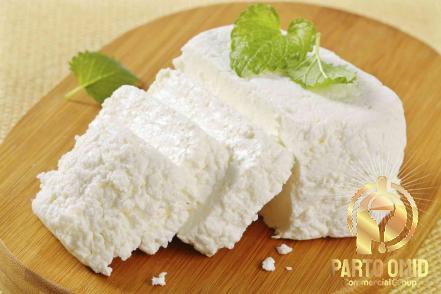

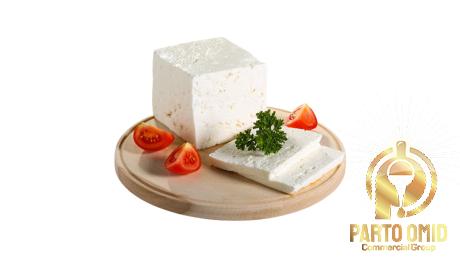
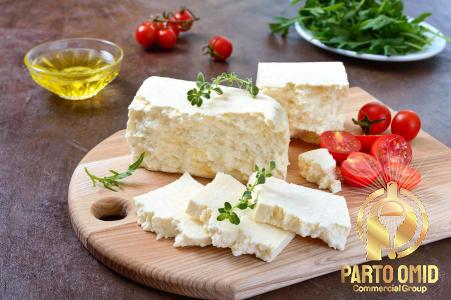
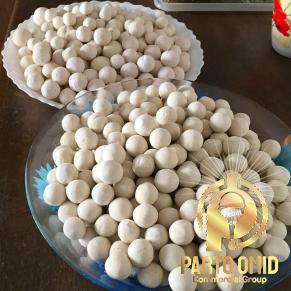
Your comment submitted.